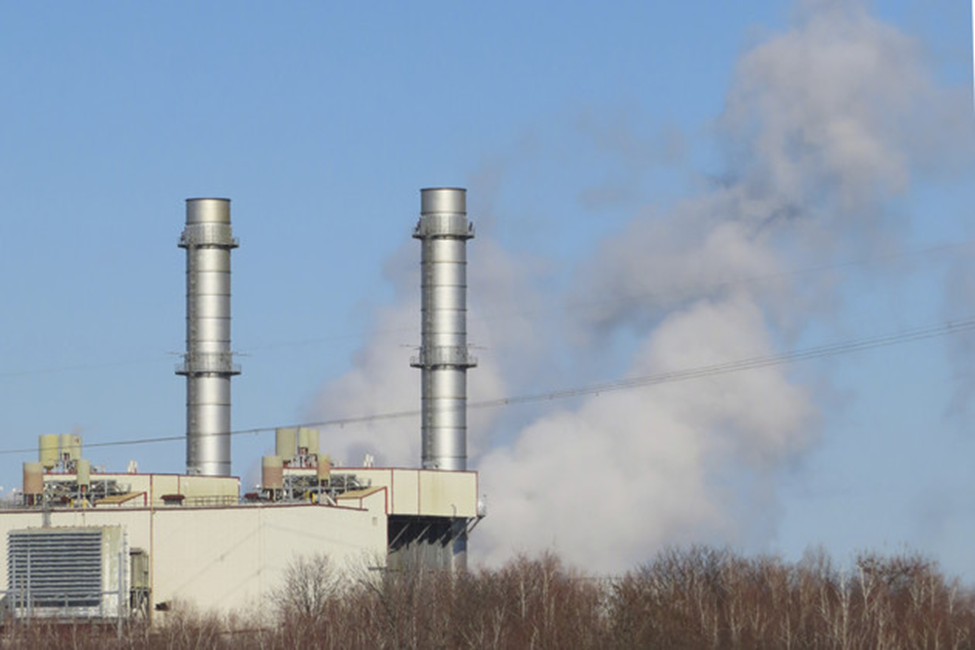CBEX: Nigerians fear savings lost as investment app freezes them out
Whose fault, rising cost of utility bills in Garden State
Customers across a fifth of the country are about to see dramatically higher utility bills thanks in part to PJM, the little-known organization of technocrats that manages the electric grid in 13 states and Washington.

Now blue state officials spooked by voter backlash to rising power prices are trying to turn it into a political punching bag.
Governors and legislative Democrats in Annapolis, Harrisburg and Trenton can’t stop bashing PJM, which has the usually mundane task of keeping the lights on by ensuring there is enough power available across the region.
State Sen. Bob Smith, the head of a New Jersey committee that oversees energy policy, has warned that people are looking to tar and feather whoever they think is responsible for bills that are about to jump by $25 a month in the Garden State.
Democrats there and in other states have made it their goal to make sure voters think PJM is to blame for their pain. While there is also some blame being thrown at President Donald Trump, who is hostile to clean energy projects blue states were counting on for power, Democrats are clearly hoping to elevate PJM, which few people have ever heard of, into villain status.
During a recent call-in show New Jersey Gov. Phil Murphy got one question about rising bills and immediately launched into an attack on PJM.
“We’re going to be driving this hard,” he said.
While PJM has taken heat before, the current wave of recrimination is perhaps the most intense in its history. It began last summer when PJM held an auction to buy power for customers across the region. Wholesale power prices skyrocketed, increasing tenfold. This will translate to major rate hikes starting in June – of 35 percent for some customers in the region.
Soon after the auction, Democratic governors pounced.
Pennsylvania Gov. Josh Shapiro, Illinois Gov. JB Pritzker, Maryland Gov. Wes Moore and Murphy banded together and lashed out.
Shapiro may be the first governor to throw his full weight against the Valley Forge-based organization formally known as PJM Interconnection LLC.
Late last year, Shapiro filed a formal complaint with federal energy regulators that accused PJM of causing “potentially the largest unjust wealth transfer in the history of the U.S. energy markets.” PJM’s day job is twofold: it helps plan what infrastructure is connected to the regional network of power lines that send energy back and forth across the region, and it oversees an auction that ensures there is enough power available for the region’s 67 million people.

Shapiro argued PJM does both poorly: While power plants supposedly compete to provide power, PJM has been slow to allow new power plants to be built, which means energy companies can charge high prices without any real competition. He scored an early win when PJM agreed in January to cap prices at its next few auctions.
That hasn’t stopped a further pile on in the months since, especially in New Jersey, where PJM has become the enemy du jour.
New Jersey’s ratepayer watchdog Brian Lipman said “people will die” because of higher prices. And he isn’t even one of PJM’s harshest critics in the Garden State.
Incumbent state lawmakers – many of whom are on the ballot this year – have held two hearings where Democrats spent much of the time excoriating PJM with accusations of incompetence and unsubstantiated allegations of corruption.

In a sign that cost of living is likely to be a key issue in the state’s June primary and the fall general elections, at least two Democrats in the governor’s race have gone after PJM. Steve Sweeney blasted PJM’s “unfair business practices” and Rep. Mikie Sherrill singled out problems with the grid in her recent affordability agenda.
The state’s congressional delegation has also gotten in on the action. Reps. Frank Pallone and Rob Menendez, both New Jersey Democrats, took turns criticizing the CEO of PJM, Manu Asthana, when he appeared before a House committee in late March.
Of course, it’s still unclear if voters know what PJM is, much less blame it for anything.
PJM is also fighting back.
“We don’t just, like, hang out in Pennsylvania and do what we want,” PJM senior vice president Asim Haque told New Jersey lawmakers recently.
Pennsylvania Gov. Josh Shapiro is seen before President Donald Trump delivers remarks during a governors working session in the State Dining Room at the White House on Feb. 21, 2025. | Francis Chung/POLITICO
PJM gets its name from Pennsylvania, Jersey and Maryland, which came together decades ago to share electricity.
In the years since, the organization expanded to include parts of Appalachia, the mid-Atlantic and Midwest.
Now, some states heavily rely on PJM’s market for power used by most residents. That’s generally considered a good deal, if there is a giant competitive power market across a large part of the country.
But in recent years, critics say a basic process at the heart of PJM has broken. It’s been very hard for energy companies to build new power plants. That’s helped depress the supply of energy available, just as demand is projected to rise from power hungry artificial intelligence data centers being planned across the country.
PJM must study and approve energy projects before they are allowed to connect to the grid and sell power into the market, whether they are large gas-fired power plants or smaller solar farms. The studies are laborious and can take years. Worse, if a pending project dies, PJM may have to go back and redo the analysis for others, creating a chain reaction of delay.

When there were just a relative handful of large gas or coal power plants being built at once, this wasn’t such a big deal. But now there are thousands of energy projects, mostly solar farms, that provide less power apiece but still get intense review. PJM’s backlog became enormous, stalling thousands of energy supply projects. At one point, PJM just stopped processing new applications.
PJM said it is reforming this approval process to speed along huge amounts of energy supply projects. Some of the projects that didn’t get built in the past, PJM argues, were “speculative projects” or died because of issues beyond its control, including broader supply chain and economic obstacles and local permitting issues.
The organization also says “decarbonization policies have driven resources off of the system,” a reference to clean energy policies, especially in blue states, that helped shutter old coal and gas plants that are the bread and butter of the region’s power supply and waylaid the development of new gas plants.
Murphy, for instance, spent the past seven years betting the Garden State’s energy supply future on offshore wind projects that are now dead or delayed.
In PJM’s telling, this was mostly happening during a time when there was a wiggle room in the market — demand was flat and the supply could easily match it, so prices were low. But now demand is rising and as a result prices are skyrocketing amid a supply-demand crunch.
“What we’re now seeing is a major uptick in demand, there’s no real wiggle room,” Haque testified.
New Jersey Republicans have seized on such comments to support their argument that it’s not PJM but Democrats who screwed everything up by focusing exclusively on clean energy.
In a statement, PJM said New Jersey’s offshore wind efforts “are a prime example of New Jersey’s dilemma.” New Jersey’s energy plans relied on offshore wind, then the industry fell apart.
“That is not New Jersey’s fault, but it has nothing to do with PJM,” the operator said in its statement.
Maryland Delegate Lorig Charkoudian, a Democrat, has been trying to get people to pay attention to PJM since she joined the Legislature in 2019. She said PJM was unwilling to adapt to clean energy plans by states, including Maryland, that forecast this shift.
Now, it’s a crisis and, as she sees it, PJM is blaming some of the very people that have been warning it.
“The overall strategy of PJM is to show up and tell us we’re the one who made the mistake, not them,” Charkoudian said.
During testimony to the New Jersey lawmakers, PJM’s executive director, Jason Stanek, blamed part of the problem on NIMBYs for opposing power plants in their communities and suggested, among other things, loosening permit requirements for electric infrastructure so that people cannot stop it from being built in their backyard.
During testimony to Congress, Asthana said PJM went out of its way to help New Jersey prepare for offshore wind farms and then blamed the state for counting on that power, which never materialized.
“Now, the problem is, there’s not one turbine spinning,” the PJM CEO said.
But the backlog at PJM has also held up projects that have nothing to do with clean energy.
According to Abe Silverman, a former general counsel at the New Jersey Board of Public Utilities who is now a researcher at Johns Hopkins University, the last new gas-fired power plant built in the region entered the PJM study queue in 2016. That suggests politicians who are rushing to build new gas power plants hoping to bring down prices can’t exactly hope for sudden relief if PJM can’t speed things up soon.
Silverman said there’s a strong argument that PJM should have seen what’s coming and responded better. Instead, he said it defended itself and tried to muddle through for a long time.
“The interconnection queue has been a hot mess,” he said.
Some regulators in red states have also criticized the agency, though not as intensely, often for different reasons and without the imprimatur of their governors’ bully pulpit. Some of their residents are also being hit by higher prices — some residents in Ohio could see power prices go up by 35 percent.
That’s partly partisan but also a quirk of historic utility regulation decisions. Some states with Republican governors now are insulated from PJM’s price fluctuations because their utilities continue to own power plants, like in West Virginia.
All of PJM’s hiccups and holdups couldn’t come at a worse time. Demand is projected to skyrocket because of data centers. Buried in some of the criticism of PJM is the worry that China could win an AI arms race in part because of its gridlock.
A waiting time of five years or more for projects can make it basically impossible for many new power projects to survive.
Clean energy projects that were stuck waiting for PJM approval may no longer be viable with Trump in office. But the same kind of delay could be a problem for gas plants that have to wait years for approval if a climate-friendly Democrat comes to office next.
“If they can’t be built in four years, they have such a high risk from political interference,” said Julia Kortrey, a former economic development official in New Jersey who now works at Evergreen
POLITICO






